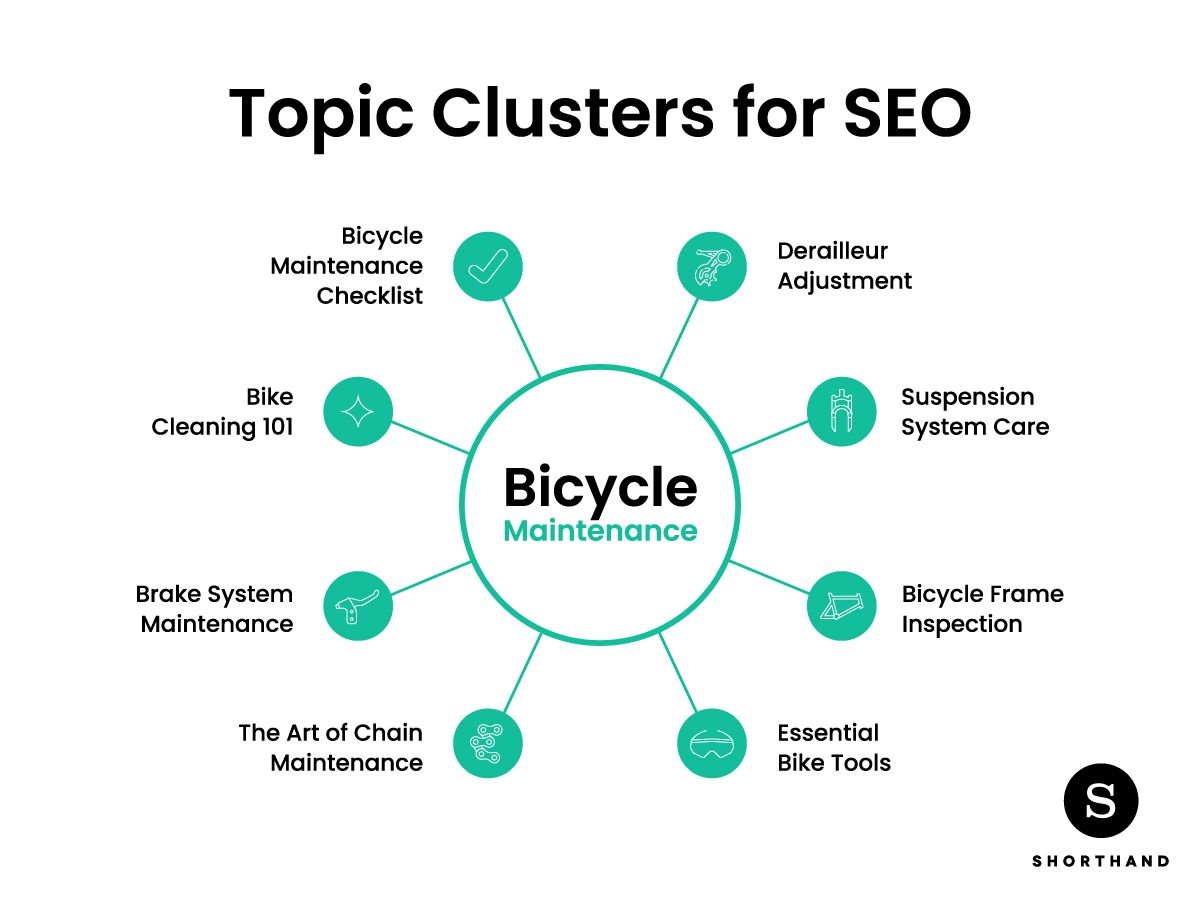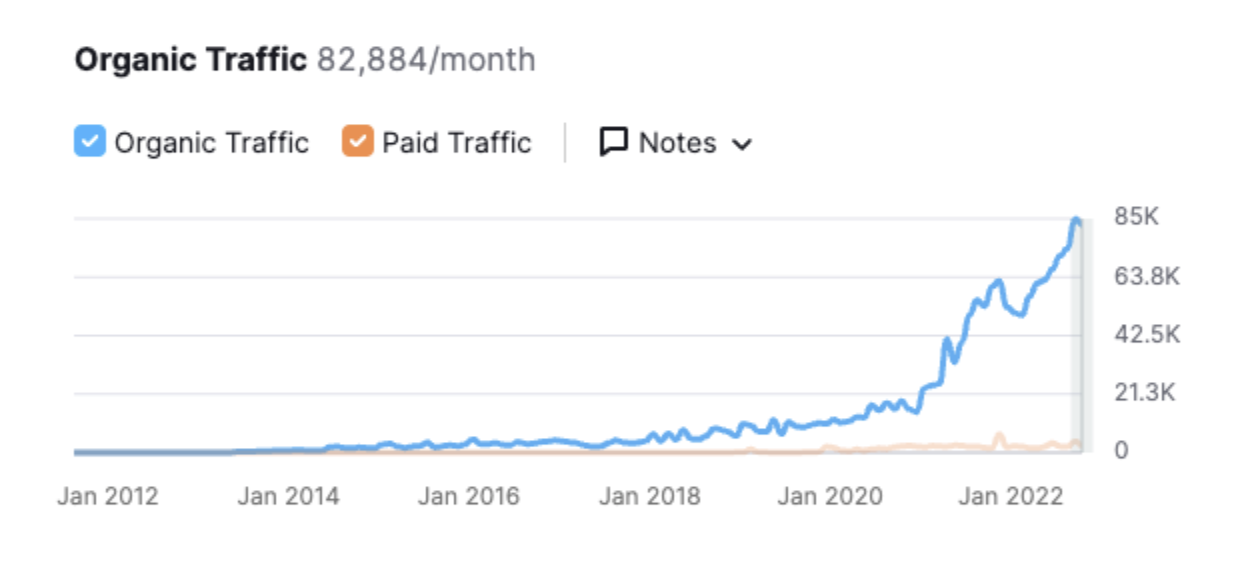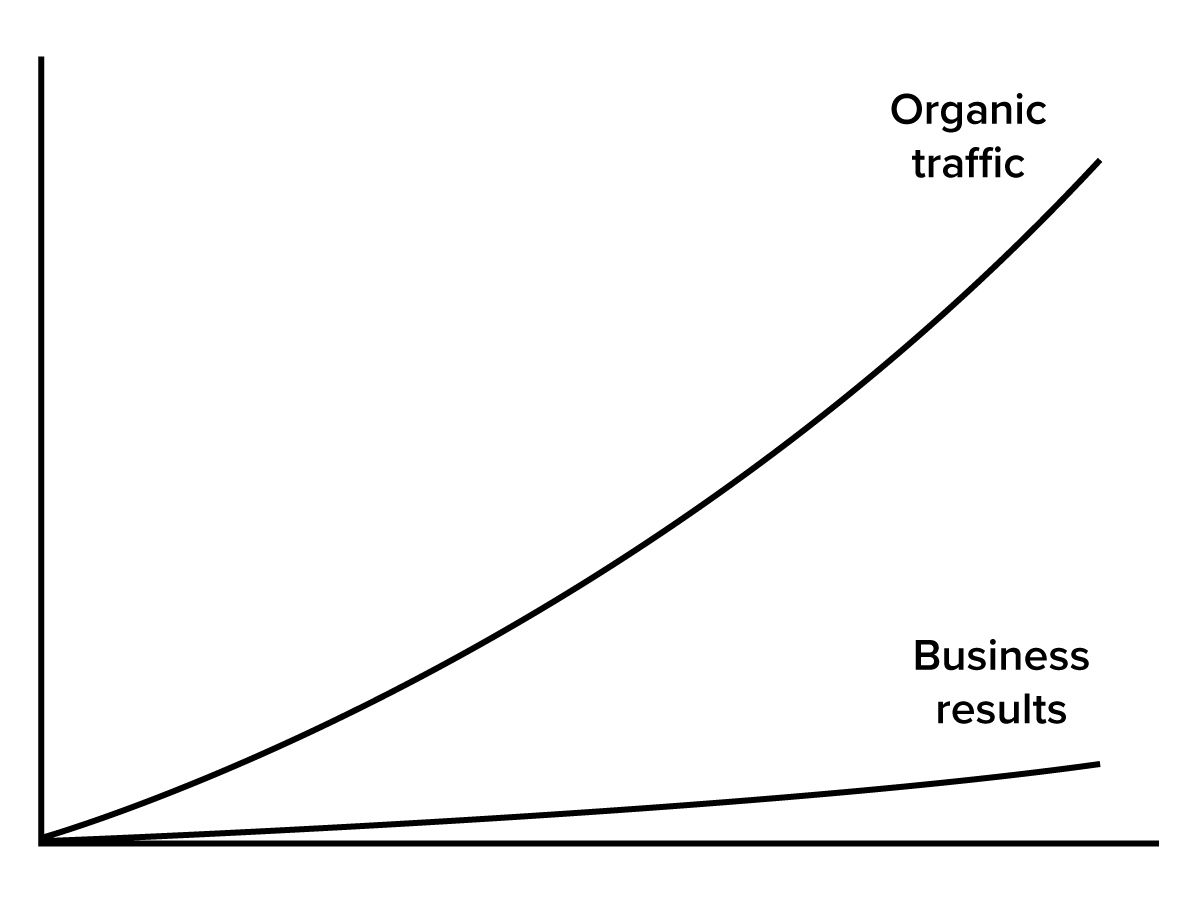How to invest in SEO without trashing your brand

To build a brand, your content needs to have beautiful design, engaging writing, and the ‘earned secrets’ of specific expertise.1
To rank in Google, you need precisely none of these things. If anything, the incentives go in the other direction. Google’s algorithm forces writers to squeeze their best creative ideas through incredibly tight constraints.
As everyone knows, and complains about, constantly: the results aren’t always pretty.
It doesn’t need to be this way. In this piece, I’ll cover how we at Shorthand are building our brand while investing, successfully, in SEO. While I’m critical of ‘SEO’d content’ as a genre, the siren’s call of algorithmic distribution — and, for us, the undeniable benefits of compound growth in search — is impossible to ignore.
Let’s attempt to square this circle. I’ll cover:
- How to rank in Google
- Why the incentives of SEO are a travesty
- Why brand matters
- Why SEO needs the careful and consistent execution of taste
- How to exercise taste within constraints
- Show me the money, Matt
- What about generative AI?
But first, let’s set the scene with some in-article clickbait (is that a thing?). Here’s how to rank in Google.
What do the BBC, Tripadvisor, and Penguin have in common?
They craft stunning, interactive web content with Shorthand. And so can you! Publish your first story — no code or web design skills required.
Sign up now.
How to rank in Google
The most reliable way to rank in Google is to reverse-engineer content that is already ranking. Do this repeatedly around a single subject area and Google will see that you have expertise in that area.
Let’s take the example of bicycle maintenance. My knowledge of bicycle maintenance is limited to ‘take it to the shop when the brakes stop working,’ but Semrush suggests that people are searching for topics like ‘bike cleaning,’ ‘brake maintenance,’ and ‘derailleur adjustment.’
The less authority Google thinks you have, the more convincing you’ll need to do. If you’re Hubspot writing about inbound marketing, or the Department of Transportation writing about airline policy, this process shouldn’t be too onerous. But if you’re a new business entering the market, you’ll likely have to do a lot more work to establish authority.
This is a challenging process to get started from scratch, but with dedication and patience most organisations should be able to publish SEO’d content and grow their organic traffic. We did it; our competitors are currently doing it by reverse-engineering our content strategy (yep, we see you); and your competitors are probably doing it right now, too.
The incentives of SEO are a travesty
I know what you’re thinking: this looks like a hugely compromised creative process. And that’s because it is. If you’re looking to build a brand, the incentives of SEO are an absolute travesty. Too easily, distribution not only trumps brand; distribution ruins brand.
The problem is that the incentives of SEO are extremely powerful. Unlike most other marketing channels, SEO can provide a direct and powerful up-and-to-the-right chart. Here’s ours, from Semrush.
Take my word for it: It’s easy to get addicted to charts like these. And when you get addicted, you start to dedicate all your resources into goosing the Google algorithm. This usually means creating more SEO’d content and focusing rewrite efforts (‘optimisation’) purely on improving your ranking.
This is a mistake. Google is a terrible managing editor, and is no substitution for the hard-earned taste of the humans on your team. As I’ve written about elsewhere, these humans are extremely talented individuals who usually do their best creative work outside of business hours, precisely because of these constraints.
But how on earth do we budget for ‘human taste’ — and the expense of great writing, design, and expertise this implies — when writing purely for machines produces such pretty charts?
The importance of brand
The answer is brand. A ‘brand’ is a collection of values and impressions that are held by a group of humans about a product, person, or organisation. Insofar as a brand exists, it exists in the brains of those humans.
Great brands are built with the careful and consistent execution of taste on every aspect of a business, including content. Taste is required because humans are incredibly judgmental bastards. And their judgements can stick, for better and worse, over a long period of time.
More to the point, these judgements change what people do in the future. To be successful, content teams — and, frankly, everyone in your business — needs to keep this fact firmly in mind.
Why SEO needs the careful and consistent execution of taste
An effective content strategy needs to account for both brand and algorithmic distribution.
If you account just for brand, you’ll likely need to pay for distribution, unless you have an existing owned audience — or your content will sink like a stone. And if you account just for algorithms, there’s a risk your content will actively harm your reputation.
As we’ve established, SEO over-indexes on getting people to a particular page, and hopelessly under-indexes on whether people make a specific, positive, and memorable judgement about it.
But it’s precisely this judgement that leads to the actions that can, at scale, transform a business: word-of-mouth; content loyalty; subscriptions; event attendance; the determined hustle required to convince management to spend money on a product; and so much more.
I think this is one reason why those up-and-to-the-right traffic charts so rarely mirror the actual performance metrics of the business as a whole. While organic traffic is always a little shaggy — everyone Googles, not just your ideal audience — it’s not as shaggy as we sometimes believe.
This is a highly unoriginal diagram. I saw a version of it for the first time in Jimmy Daly's ebook, 10 Advanced Content Marketing Concepts.
This is a highly unoriginal diagram. I saw a version of it for the first time in Jimmy Daly's ebook, 10 Advanced Content Marketing Concepts.
And while digital marketing tactics like conversion rate optimisation (CRO; marketers love acronyms) can have an impact, they will always have a much greater impact if they’re building on a strong brand.
How to exercise taste within constraints
I’ve established that brand helps your business, and brand is built with smart humans exercising their hard-earned taste. It follows that taste is good for your business. But this still doesn’t solve our problem of the terrible, potentially brand-trashing incentives of SEO.
After all, algorithms have a way of ironing out the wrinkles of original thought, smoothing over interesting edges, and making content a little grey and generic. No one wants this for their brand. How to square this circle?
Here’s how we’re doing it (at the moment):
1. Know (and accept) the constraints of the genre
As I’ve outlined above, the constraints of ‘SEO’d content’ exist for a reason. The only way to do great work within these constraints is to become an expert in them. Get to know which aspects of the genre are genuine rules, and which are just norms that have ossified into accepted practice over time.
It’s hard to do this without experience and experimentation. But once you have some reps under your belt, you’ll be able to more confidently break with some of the bad habits of SEO, while still earning distribution from Google (or Bing’s) algorithm.
2. Hire people that have great taste
Last year, I was given the opportunity to hire another content person onto the team. Instead of advertising for a ‘content marketer’, I advertised for a senior editor.
I did this to signal to the market the kind of skills we valued. With the relative decline of journalism over the last two decades, there are many — many — exceptionally qualified people sitting in comms and editorial roles in big organisations. Most of these people don’t think of themselves as ‘content marketers’, even though their skills and experience are hugely relevant to the day-to-day work of content marketing.
The results were astonishing. We received applications from published novelists, senior managers in newsrooms around Australasia, editors of magazines, as well as many more traditional — but still exceptional — content marketers.
We hired folks with exceptional skills in writing and editing. They have great taste, and together ensure that we only publish content that builds a more positive reputation in the minds of our audience.
3. Spend more on great writing
Most SEO content is written by freelancers. But which freelancers? Again, the incentives of SEO often drive brands to hire the cheapest people on the market.
I’m not the first to point out why this is a problem. First, any savings you make are often outweighed by the time you have to spend internally getting cheap writing to a publishable state.
Second, the generic content produced by cheap writers can now be produced by robots. This has changed the competitive landscape. When everyone can produce generic content, the only path is to invest in remarkable content. And this costs money.
4. Spend more money on design
At Shorthand, we spend over 30% of our budget on what we call ‘story design.’ This isn’t ‘let’s paste in some stale GIFs.’ It isn’t ‘let’s paste in some custom illustrations’, either. It’s a complete design of the entire reading experience.
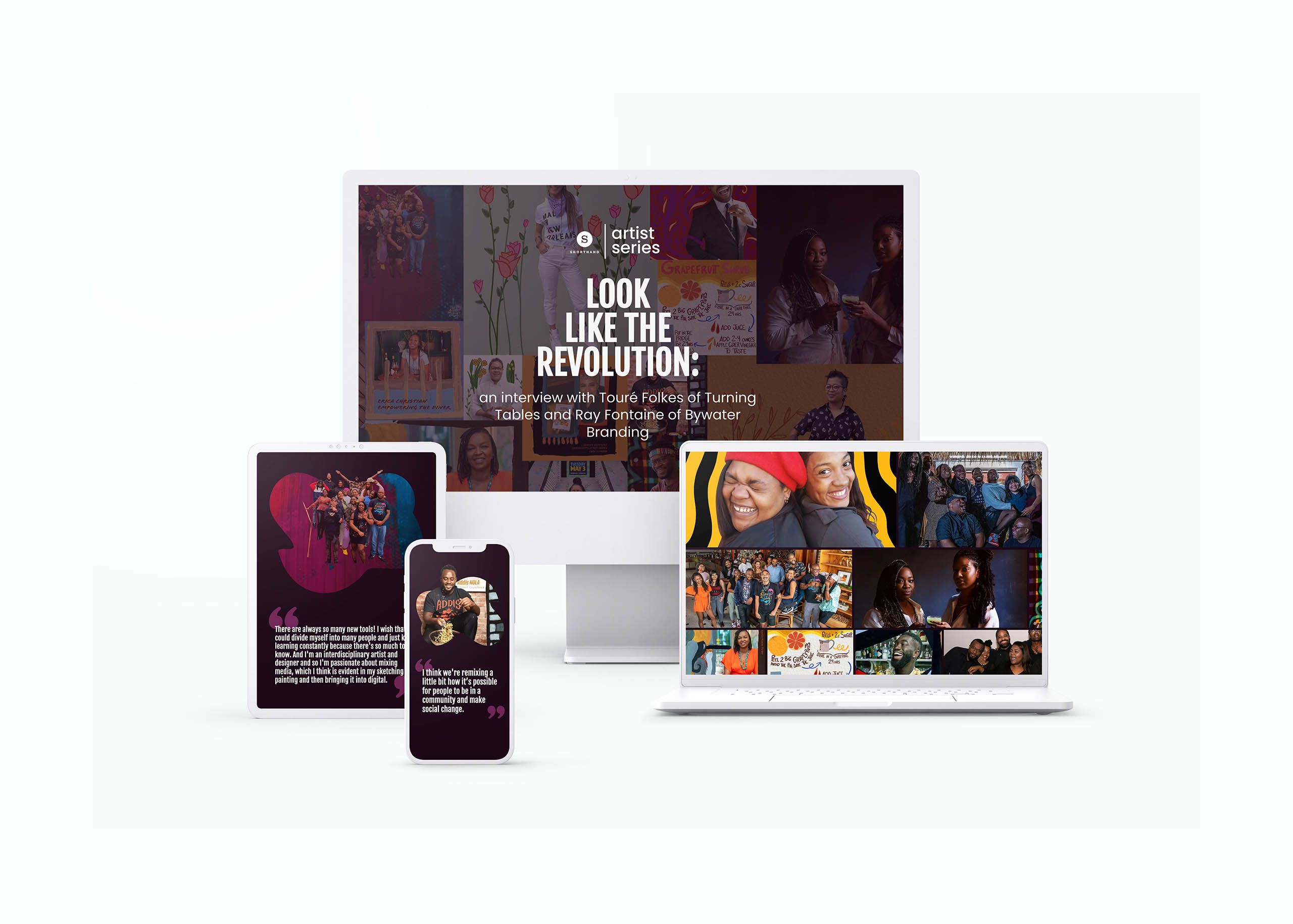
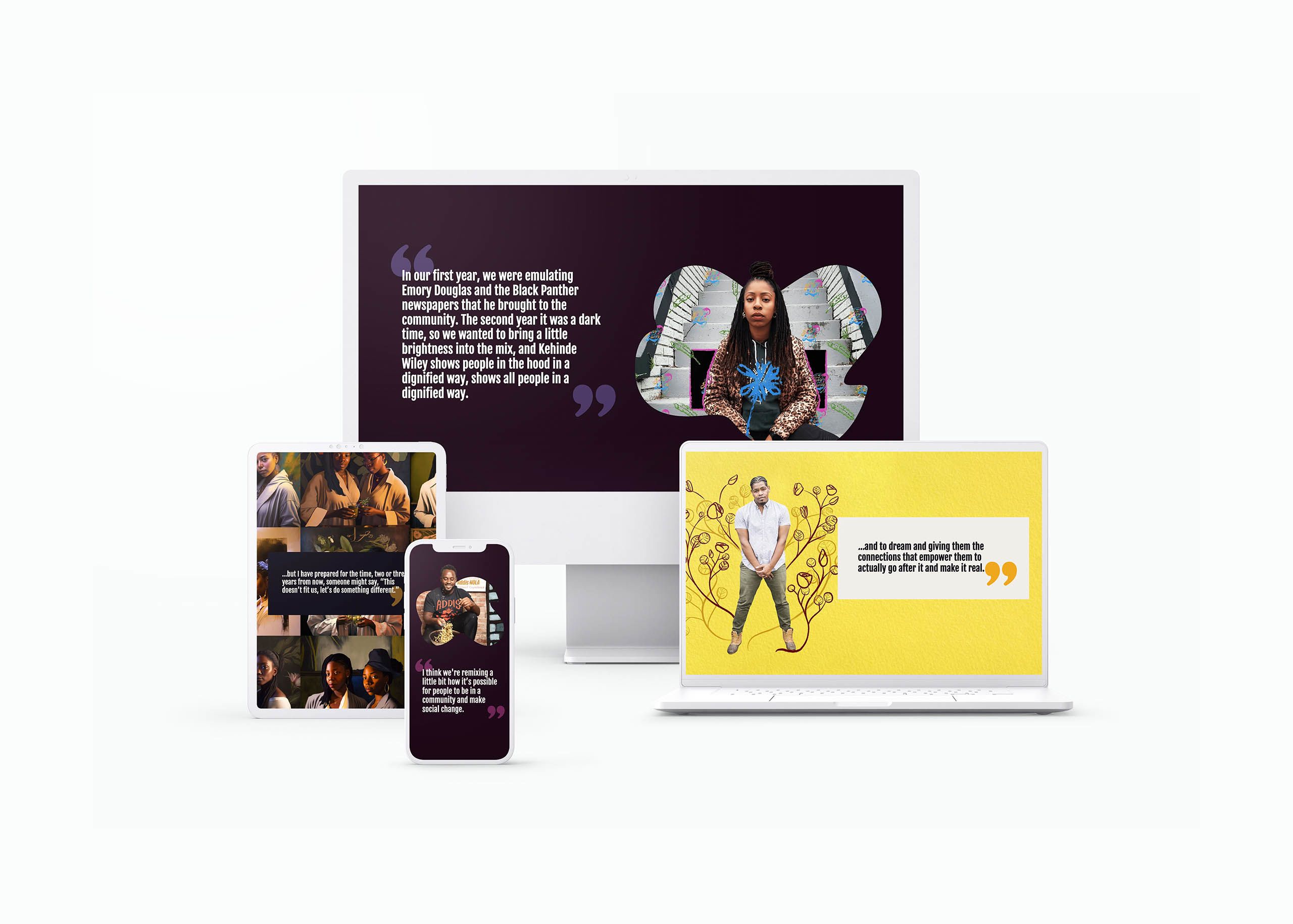
This isn’t perfect — but it’s a hell of a lot better than the bland and generic content produced by most websites. Content design isn’t quite a ‘moat’, but it’s definitely a significant competitive advantage.
Some of this isn’t possible in a generic CMS. It’s too custom, and would require a developer and web designer to build. It’s not reasonable for content teams (other than, maybe, The New York Times) to make this investment.
We’re lucky. Our product is a tool that allows writers and graphic designers to create beautiful, custom layouts without developers or web designers, for every single piece. This is the only reason we can afford to create great design at scale.
But hey, you could be lucky too?
5. Slow down your editorial process
SEO incentivises speed. The quicker you write, the more you publish; the more you publish, the more traffic you win.
This comes at a cost. It’s a cost that’s initially paid by your reader, who’s going to either bounce (if you’re lucky) or remember you (there goes your brand). And it’s a cost that’s paid, later on, by your business, which doesn’t get the results it expects from your work.
Apparently 17 humans read a piece from the New Yorker before it gets published. We don’t do that — but we do make sure everything we publish goes through a consistent and comparatively laborious editorial process, with different humans holding specialist roles along the way.
Great writing is hard. The aim here is to give your superbly judgemental editors the space to exercise that judgement.
6. Build a database of expertise
We’ve talked about great writing and great design. But what about expertise? Most experienced content teams know that expertise is important. But how do you resource it? How do you operationalise it within the typical SEO content workflow?
We’re doing this in two ways. First, we have an internal repository of customer and expert interviews that we tap for inspiration and background. Not all of this can be quoted, but it can form the backbone of expert-driven content.
Second, we’re paying freelancers to interview people. We want more than quotes — we want those earned secrets, which, as all reporters know, can only truly be sourced with human conversations.
As our content strategy evolves, I could see this becoming even more important. With AI tools raising the floor for the entire industry, there’s likely to be a strong market for ‘great writers who can talk to experts.’ That’s certainly what I’ll be looking for.
Show me the money
Let me close by addressing the elephant in the piece: money. A lot of the advice above suggests moving more slowly and spending more money.
This is true. But I strongly believe that great writers, designers, and editors are much more efficient than their cheaper alternatives. They often work more quickly; their work needs fewer rounds of editing and review; and — to my larger point — their work will be more likely to build your brand and actually contribute to the success of your business.
And if you really want to save money, most content teams have a massive, glaring neon-green inefficiency staring them in the face: don’t publish so much stuff. You’ll be amazed at how much money you can save by not publishing content. This is actually quite difficult to do, and will require editorial judgement and — say it with me — taste.
What about generative AI?
Yes, I know. With the rise of generative AI tools, we’re seeing a lot of companies come to the opposite conclusion.
This reflects — and I’m being as generous as I can — poor strategic thinking. It misses the most important, fundamental, downright obvious point about content on the web: it’s competitive. If everyone can create the same content for $1 per article, then there’s no long-term competitive advantage whatsoever in creating that content.
This is true even if AI tools continue to improve and that $1 content becomes as good as or better than what you’re currently publishing. The bar, happily, just gets higher.
The most successful content-driven organisations will be those that continue to invest in their people. Your competitive advantage will never be in the tools you use, which are cheap and available to everyone. It will always be in the people you work with, and how they help you to create content that no one else can.
1. I first came across 'earned secrets' from Ryan Law. It's a useful differentiator. He talks about it in some detail in this podcast.


